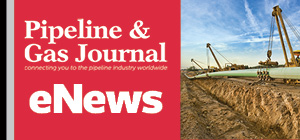Erosion Forces Second Shutdown of Ecuador’s OCP Pipeline in July
(Reuters) — Ecuador's OCP heavy crude pipeline suspended pumping on Monday, just hours after resuming operations, as a precaution due to the erosion of the Quijos river, the company said in a statement on July 8.
This is the second suspension of operations on the OCP pipeline this month. The previous halt was linked to the erosion along the nearby Loco River, located in Ecuador's Amazon region.
The erosion, which began along the Coca River in 2020, has since expanded, damaging oil infrastructure and roadways and now threatening the Coca Codo Sinclair hydroelectric plant, the largest in Ecuador.
According to official data, Ecuador's crude oil production, including output from state oil company Petroecuador and private companies, fell to 134,153 barrels per day (bpd) on Monday. Before the incident, on Monday June 30, production was around 465,000 bpd.
Pumping at Ecuador's other oil pipeline, the state-owned SOTE pipeline, has also been suspended since July 2 due to heavy rains. Petroecuador on July 3 declared force majeure on all operations, including crude exports, due to the pipeline suspensions.
Related News
Related News

- 450-Mile Eiger Express Pipeline Gets Green Light for Permian-to-Gulf Natural Gas Transport
- Energy Transfer’s Lake Charles LNG Project Wins Export Extension
- Kinder Morgan Launches Binding Open Season for Texas-to-Arizona Pipeline Expansion
- Harvest Midstream to Acquire 1,500 Miles of MPLX Pipelines in $1 Billion Deal
- ATCO’s 143-Mile, 1.1 Bcf/d Yellowhead Pipeline Project Wins Regulatory Approval
- Hungary to Start Talks with Qatar About Buying LNG
- Japan Becomes Top Buyer of LNG from Russia's Sakhalin 2
- BayoTech Relocates Northern California Hydrogen Hub to Accelerate Deployment
- Energy Transfer to Build $5.3 Billion Permian Gas Pipeline to Supply Southwest
- Ontario Seeks Study on Alberta-to-Ontario Pipeline and James Bay Port Corridor





Comments